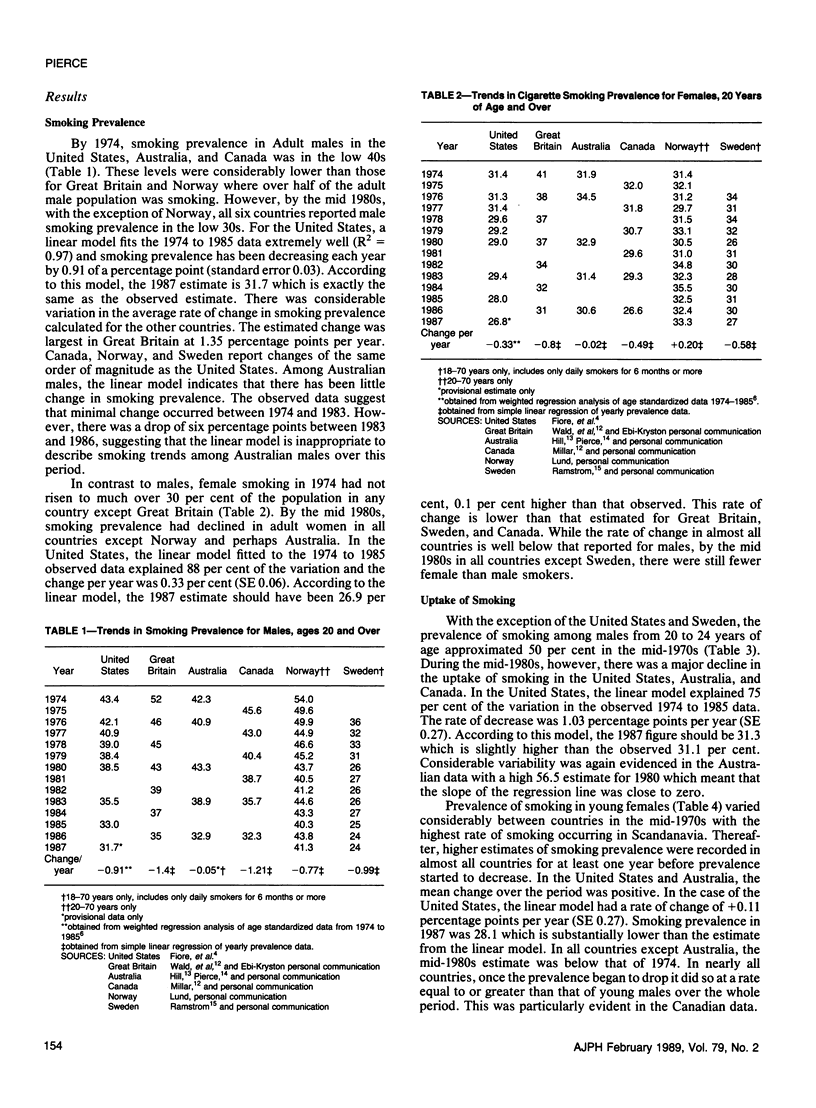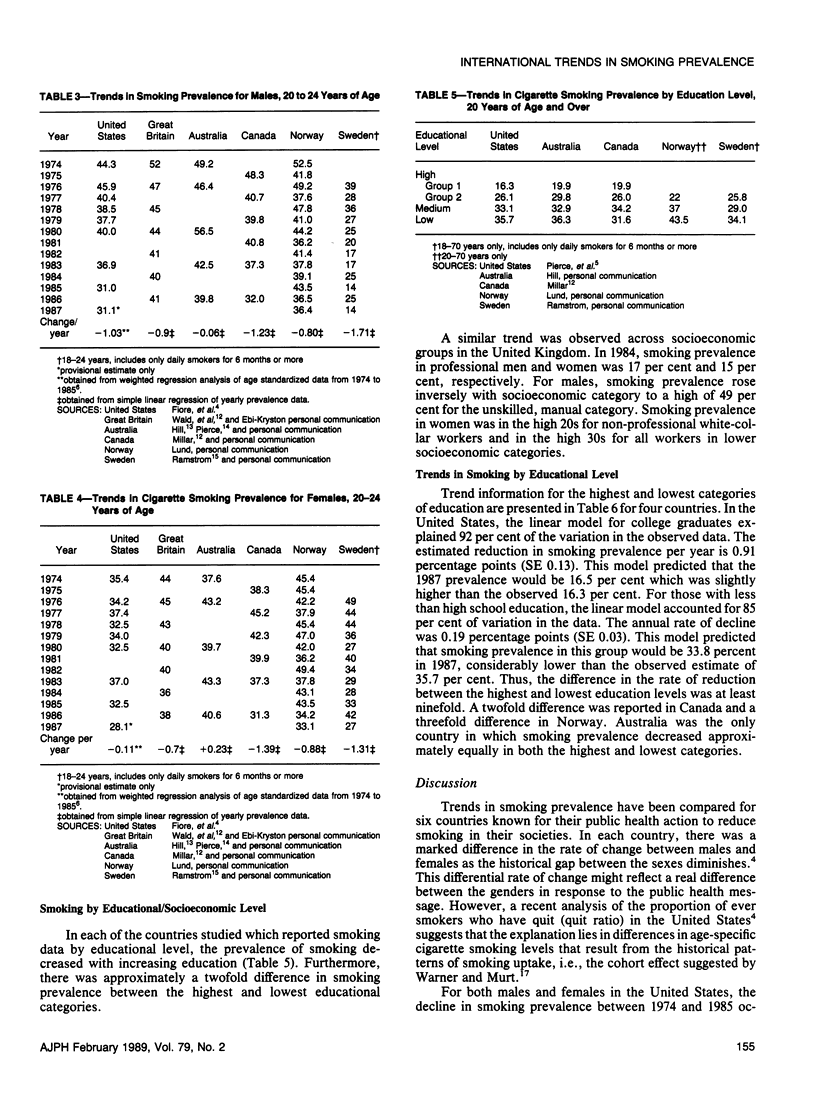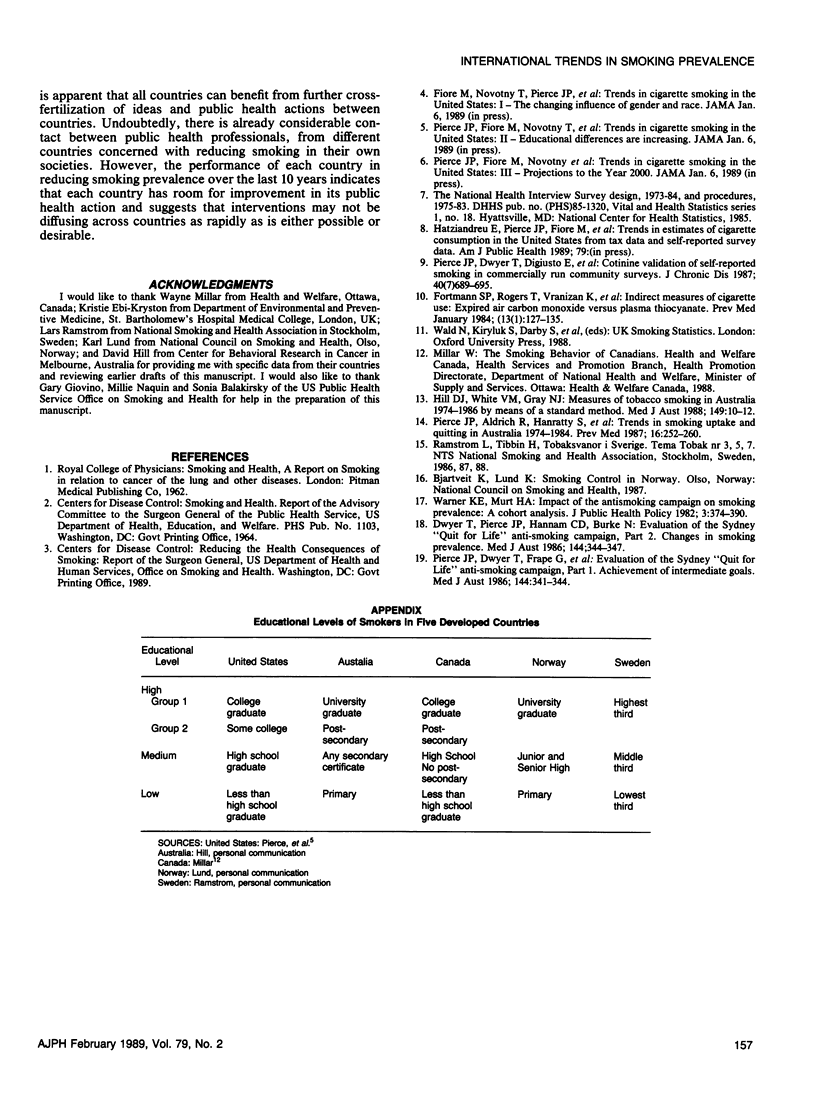Abstract
Data on smoking prevalence since 1974 are presented for the United States, Canada, Great Britain, Australia, Norway and Sweden. During this period, sex-specific prevalence has decreased in all the countries studied, with the exception of Norway, where women showed an increase. There was also a considerable decline in uptake of smoking by the young over this period, suggesting that the observed decline in prevalence is likely to continue. In the United States, the rate of decline in adult smoking prevalence has been linear. This linear pattern is probably similar in prevalence in most other countries studied, with the notable exception of Australia, which demonstrated no change for the majority of the period. Among the six countries studied, the United States had neither the lowest smoking prevalence nor the fastest rate of decline over the period. Differential patterns of change infer that the successful public health interventions in some countries are not being applied in others. While the lack of change in Australia prior to 1983 is surprising, this was followed by a sizable drop in smoking prevalence for both higher and lower educational groups in conjunction with the introduction of mass media-led antismoking campaigns. Most of the other countries report an ever increasing gap in prevalence between higher and lower educational groups. These findings suggest that all countries might benefit from a greater exchange of antismoking ideas and public health action.
Full text
PDF





Selected References
These references are in PubMed. This may not be the complete list of references from this article.
- Dwyer T., Pierce J. P., Hannam C. D., Burke N. Evaluation of the Sydney "Quit. For Life" anti-smoking campaign. Part 2. Changes in smoking prevalence. Med J Aust. 1986 Mar 31;144(7):344–347. [PubMed] [Google Scholar]
- Fortmann S. P., Rogers T., Vranizan K., Haskell W. L., Solomon D. S., Farquhar J. W. Indirect measures of cigarette use: expired-air carbon monoxide versus plasma thiocyanate. Prev Med. 1984 Jan;13(1):127–135. doi: 10.1016/0091-7435(84)90045-8. [DOI] [PubMed] [Google Scholar]
- Hill D. J., White V. M., Gray N. J. Measures of tobacco smoking in Australia 1974-1986 by means of a standard method. Med J Aust. 1988 Jul 4;149(1):10–12. doi: 10.5694/j.1326-5377.1988.tb120475.x. [DOI] [PubMed] [Google Scholar]
- Pierce J. P., Aldrich R. N., Hanratty S., Dwyer T., Hill D. Uptake and quitting smoking trends in Australia 1974-1984. Prev Med. 1987 Mar;16(2):252–260. doi: 10.1016/0091-7435(87)90088-0. [DOI] [PubMed] [Google Scholar]
- Pierce J. P., Dwyer T., DiGiusto E., Carpenter T., Hannam C., Amin A., Yong C., Sarfaty G., Shaw J., Burke N. Cotinine validation of self-reported smoking in commercially run community surveys. J Chronic Dis. 1987;40(7):689–695. doi: 10.1016/0021-9681(87)90105-6. [DOI] [PubMed] [Google Scholar]
- Pierce J. P., Dwyer T., Frape G., Chapman S., Chamberlain A., Burke N. Evaluation of the Sydney "Quit. For Life" anti-smoking campaign. Part 1. Achievement of intermediate goals. Med J Aust. 1986 Mar 31;144(7):341–344. [PubMed] [Google Scholar]
- Warner K. E., Murt H. A. Impact of the antismoking campaign on smoking prevalence: a cohort analysis. J Public Health Policy. 1982 Dec;3(4):374–390. [PubMed] [Google Scholar]


